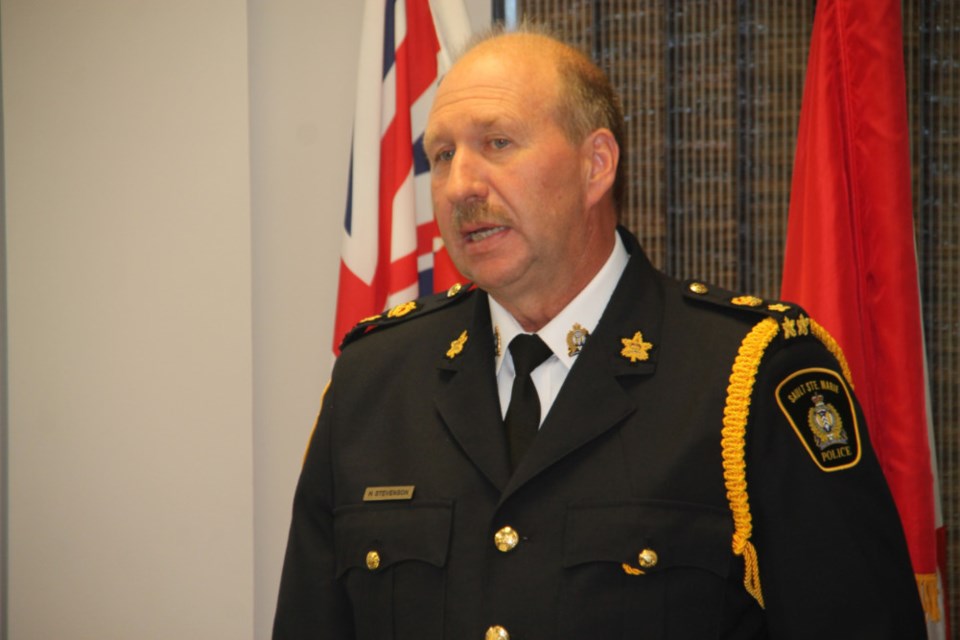Hugh Stevenson, the Sault Ste. Marie Police Service’s new chief, along with the officers under his command, are going to beef up police presence in problem areas in the downtown core and apply more pressure to the drug trade locally.
A new High Enforcement Action Team (Project H.E.A.T.) will take to the streets beginning July 2.
“To the folks out there that are dealing drugs in this community, they should be put on notice the Sault Ste. Marie Police Service, and the community, are going to work together to resolve this issue,” Stevenson told SooToday after the open portion of Thursday’s Sault Ste. Marie Police Services Board meeting.
“This crime suppression unit...brings us back to more of a traditional approach, using community policing and incentives for crime prevention as well, but what it’s going to do is increase the public exposure of our police service in those areas of the community where some of our community members may not feel as safe in our downtown core,” Stevenson told the board.
“You are going to see an increased presence of our officers in that area,” Stevenson said, adding police will work with the community to fight the root causes of crime.
“I’ve been very clear…(I want to) increase the number of officers on our platoons. That will be done very shortly,” Stevenson said.
“Not all crime comes out of the drug distribution system, but a lot of it does. We know our residential and business break-ins, thefts from autos, are related to the substance abuse industry where they need money to purchase their next drug...we definitely will have a greater exposure of a variety of different units with different mandates, the visibility will be there,” Stevenson said.
At the same time, Stevenson said “we also want the substance abusers to be aware of the fact that we’re there to help them and we’re there to make their lives better some way in the end.”
“It’s the dealers (police are after).”
“We’re trying to increase visibility in the downtown core, along Queen Street, the waterfront, and also taking some direct action targeting crime suppression activities within the city...we’re seeing an uptake in regard to drug-related activities, break-ins to cars and businesses,” Deputy Chief Sean Sparling informed the board.
“We’re also seeing, to be quite honest, some problem locations in the city with regards to drug trafficking at the street level, so this plan is meant to address that,” Sparling said.
Police, Sparling said, will be taking some officers out of investigation services and assigning them to front line patrol crime suppression duties.
“We should be able to field up to two officer units per shift (four officers in all)...in a plainclothes capacity, mainly targeting drugs, and at the same time we’re going to be able to continue staffing our bicycle patrols and our beat officers in the downtown core. This (Project H.E.A.T.) will be our main focus in the coming months,” Sparling told the board.
The plainclothes officers, Sparling told SooToday, “are not going to be undercover officers...but people will see them. They’ll be clearly visible as officers when they get out of the cars.”
A report from Sparling to Chief Stevenson and the board reads “these officers are being directed to proactively target those engaged in illicit drug activities and related crimes with particular emphasis on opioids, such as fentanyl...I am confident they will have a noticeable impact on these issues.”
“Starting in the fall the CORE (Community Oriented Response and Enforcement) Unit will tackle problems straight on, on a long term basis as required in the downtown,” Sparling added.
Stevenson said he is also considering community surveys in order to get the public’s perception of crime in the city, dialoguing with community residents.
Stevenson said response time to police calls (answering a question put forward by board member John Bruno at Thursday’s board meeting) should improve, with the help of the newly revived Sault Police Auxiliary Unit.
The beefed up police presence will be reporting to Sparling on a weekly basis on what they find, that information to be ultimately passed on to the board.
“We can tailor our response based on what we find on a weekly basis,” Stevenson said.
Project H.E.A.T. will serve as a tool for police to use, Sparling said, until a formal business plan is drawn up and finalized by police and the board.
